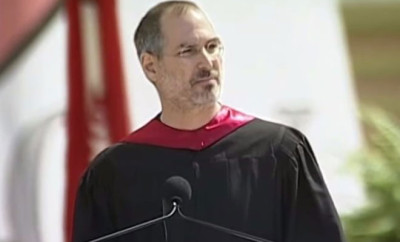
7 Steps to Self-Actualising
- Who has time for self-actualisation these days? Do you?
- With the increasing demands on your time and adjusting to all the changes around you, who among us has the energy to even think about self-actualisation?
- And besides, isn’t self-actualisation a luxury that a person can hardly afford in the 21st century?
- In fact, how long has it been since you even heard the term self-actualisation?
If any of these questions ring a bell, I’d like to introduce you to seven easy steps that will empower you to “make actual or real,” that is, to “actualise” your best you and to activate your untapped potentials as you mobilise known and unknown resources within yourself.
And why do this? If you do, then there will be more of you to invest in your work, career aspirations, relationships, and health. All of this arises because of the paradox inside of self-actualisation: we do not have time to not make our highest and best potentials actual. Without being at our best and tapping into our hidden resources, our efforts take more time and energy, are harder and much less enjoyable.
The paradox is, that it is by enriching the inner world of our mind and emotions, that we make ourselves more able to move to the highest levels of outward performance and success. It’s these “soft” skills and competencies that govern what we call the “hard” skills that we can empirically measure. It’s the inner games of our mental frames that control the outer games that we play and seek to win.
Given these paradoxes, let me now raise these questions:
- What is self-actualisation and what does it mean for living in today’s world as a sales person, entrepreneur, manager, executive, leader in business, etc.?
- Does self-actualisation, or the lack of it, affect our skills, competencies, success, quality of life, happiness, relationships, health, etc.?
- How do we actually actualise our untapped potentials?
- Is there a fast-track to self-actualisation?
What is Self-Actualisation?
Self-actualisation refers to “making actual” your innate talents, aptitudes and possibilities and thereby releasing your highest potentials. You do this by satisfying your lower needs that drive you (food, water, sleep, etc., safety, love and affection and self-esteem) and moving into the highest being needs by learning, growing, changing and transforming. In all of this you are becoming your best self and becoming fully functioning, to use the words of Carl Rogers and how he described it. Along the way, you regularly have what Maslow called “peak experiences” that is, those times and places where you seem so engaged and focused that the world, time, and self go away and you seem to be completely lost in the moment. Today we call that the “flow” state.
Seven Steps to Self-Actualisation
So how do you do it? What are the seven steps? To unleash your potentials and to mobiliee the inner and outer resources so that you can self-actualise, I have formatted the process into seven steps that make it easy to remember.
1 Meaning: Enter the Construct to become a truly robust meaning-maker.
2 Dream: Set a Course for your biggest dream for living passionately.
3 Transformation: Enter the Crucible of transformation to handle your energies.
4 Self-Esteem: Get over yourself — get over your self, emotions, fallibility, etc.
5 Intentional: Commission your Executive mind to align attentions to your highest intentions.
6 Openness: Embody your highest meanings in an open feedback loop.
7 Flow: Enter the Zone for peak experiences and peak performances.
1 – Enter the Construct to become a robust meaning-maker.
It all starts with meaning. Because self-actualisation is a function of meaning, we have to rediscover our innate powers of meaning-making so that we can create some great meanings. In saying that we have innate powers of meaning, I refer to the fact that all human beings, everywhere on this planet, create meaning. By the very nature of our minds and bodies, we are meaning-makers. Colin Cox says that we are “magical meaning-making machines.” Unlike animals, we do not have instincts. We don’t have fully developed unconscious intuitive programs for knowing what to do and how to be. And it is into that gap that we learn—and that makes learning to create, meaning the human instinct.
Ultimately, to actualise our very best visions and values and unleash our highest potentials, we have to create meaning for things. And we not only have to create mere meaning, but great meanings. In fact, inspiring meanings, even compelling and exciting meanings. Why? Simply because if something isn’t meaningful, then we won’t care about it, won’t value it, won’t feel sufficient emotional energy and motivation to do anything about it. Yet with great meanings that inspire, we stretch forward to make our potentials real.
As we construct meaning, so it is into the construct of our mind-body system that we have to go to begin to create such robust meanings. In Neuro-Semantics we call this the construct, or the matrix of the mind. Here we have layers of frames of meaning that build up to create our map or model of the world. So, do you recognise this power in you? Do you recognise and own the power to construct really great meanings? Or do you feel that meanings are somehow “out there,” and given to you, and that you just have to accept those meanings? If so, then the matrix of frames of meaning that you live in, has you, rather than you having it. But no worry. Now that you’re aware of that, you can begin today to notice the meanings that you give to things. And as you do that, you can begin to check out the quality of those meanings. How well do they serve you? How much enjoyment, skill, pleasure, adventure, etc. do those meanings create in your life?
2 – Set a Course for your biggest dream for living passionately.
It’s also about performance. Merely having great meanings is not enough. Feeling inward inspired by a great vision, significant values, and a moving inner game, will not make our skills, talents, and potentials real. We also have to do something about the idea. We have to set a course and take effective action. In this, self-actualisation is also a function of performance.
So, are you performing your biggest dreams? Are you actualising your potentials with the opportunities that you see or create? How well do you take effective action in making your dreams come true? Do you have an action plan? Do you know the one thing that you will do today that will set you on the course to living your vision?
People who dream without doing, who know without implementing into action, experience no more than those who don’t dream or know at all. In the end, nothing is done, nothing is accomplished, and nothing is achieved. No goals are actualised. So we have to take action— effective action, persistent action, resilient action, committed action, focused action. We have to keep working to increase our skills so that we become competent as we take our skills, to the next level and eventually achieve peak performances in those dreams that we care about.
3 – Enter the Crucible of transformation to handle your energies.
Together the axes of meaning and performance create the model we use in Neuro-Semantics that’s known as the Self-Actualisation Quadrants. This allows us to recognise the degree of meaning and the degree of performance and to synergise both until we are able to bring great meanings into our actions and more and more robust actions to the meaningful things in our heads.
And all of that takes energy. It demands emotions. It requires the use of all of our mental, emotional, body, personal, and interpersonal energies. Yet some of our energies seem to work against us. Some of our emotions can work against us. So can some of our habits, rituals, environments, experiences, meanings, understandings, thinking patterns, needs, impulses, etc. So what’s a person to do?
In the new models of Neuro-Semantics about self-actualisation, we have developed a model around the metaphor of a crucible to handle such energies. Now a crucible is a container that can hold the molten lead or bronze or iron that’s poured into it, even though the crucible itself is made of fragile materials. Yet in melting down the materials and pouring them into a crucible, the heat and intensity of the crucible allows us to form new products and to give new shape to the former expressions.
Metaphorically, what does this mean in terms of human beings? Can we create a “crucible” to hold our hot thoughts, intense emotions, passionate dreams and hopes, powerful habits and meanings?
The answer is yes. We create a “container,” as it were, for ourselves and for each other, by using our construct of meaning-making to invent a space where we can hold these human energies and give them new shapes and forms. In coaching, for example, we hold the space for another person to be with his or her visions, values, hopes, fears, angers, joys, wonders, etc. so that the person finds and invents new ways of being and expressing him or herself.
4 – Get over yourself – get over your self, emotions, fallibility, etc.
The crucible is a way for you to get over yourself. And isn’t that the problem so often? We get in our own way. We become self-conscious. We sabotage our best efforts by over-investing ourselves in various things. Then we become rigid around beliefs, ideas and mental maps, so that our ego-investments in these things or ways of doing things, prevents us from learning new ways, being flexible, and adapting well to changes.
Here then is a great paradox about self-actualisation. While the term self is in the phrase “self-actualisation,” we have to get the ego out of the way to self-actualise! How about that? Another paradox about this is this: It takes a lot of self-esteem to be humble. So we create such meanings as “human worth and value is a given; it is unconditional.” Then with that meaning, we can treat ourselves as precious, important, and a “somebody” as our inheritance as a human being. We don’t have to earn it. Earning value is conditional, based on what we can do, and refers to self-confidence, not self-esteem.
So we go into the crucible to bring all of our ego-investments, wounded-pride, arrogance, etc. and construct a whole new way of experiencing ourselves. Then as we become—inside ourselves— meaningful and valuable to the core, we become free to express ourselves, free to discover our potentials, free to experiment, to make mistakes, to be fully fallible, to keep growing and learning.
5 – Commission your Executive Mind to align attentions to your highest intentions.
Once we’re free to be (rather than always doing-in-order-to-be), we are free to do. We’re free to really do—to turn loose, to go for it, to boldly express ourselves. Once the ego is out of the way and we realise that we are a Somebody from the beginning and don’t have to prove anything, we are free to really find out what we prefer, what fits best for our gifts and talents, what brings out our best, what enables us to actualise our highest and best potentials. Then life becomes about expressing what we have to offer to others and about enjoying the process of continuous learning and development.
Now we can give ourselves to those attentions that best serve our highest intentions. Far too often we attend things without any connection to what we are about—to our highest intentions. We might even forget our intentions. Then, instead of living a human life, we live a life that’s more appropriate to the level of animals—attending to and reacting to every stimulus that occurs. We call that experience ADD, although inside it is plenty of attentions. There’s no deficient of attentions. In fact, that is precisely the problem—there are too many attentions. Everything grabs and plays with our attention.
What there’s not enough of, is intention. So move up to your highest intentions, create meaningful intentions—visions, values, plans, dreams, hopes, compelling futures, etc. and these meanings are the things that enable you to self-actualise. Then from there, you can align your everyday attentions with your highest intentions. And doing that will enable you to live more intentionally, more on purpose.
6 – Embody your highest meanings in an open feedback loop.
Going up into the construct, into the matrix of our mind to our highest meanings is never a one-way street. As soon as we move up and access great meanings, we move back down. We bring those highest meanings back down and embody them. In the Meta-Coaching of Neuro-Semantics, we coach the body to feel and know and own the highest meanings. And we have lots of processes for such embodiment. We have numerous mind-to-muscle patterns that translate the ideas in the head, so that they run neuro-pathways in the body and create new performances in behavior.
Embodying what you know conceptually, then enables you to actually implement your great ideas and principles. It enables you to carry out your plans, your inner game, your mental strategies. This shows up in the outer games that you play. So, are you ready to do this high level of integration with what you know? Are you ready to take the time and energy to embody your highest meanings, by feeding-forward what you intellectually know, so that your body can “know” it at that level? Are you ready to practice until you drill it in? Are you ready to use other processes for mind-to-muscling the principle into your neurology?
7 – Enter the Zone for peak experiences and peak performances.
Now as you play the outer games, this leads to two specific experiences in self-actualisation psychology. Abraham Maslow called the first one peak experiences and the second one peak performances.
The first is a sense of the extraordinary. It’s as if you step out of time and space and suddenly are so much in the moment, in the now, that time stops, self goes away, and you are so engaged that it feels like a spiritual or mystical experience. And this happens to everyone. Suddenly you have a feeling, a taste, of the goodness of life, of the friendliness of the universe —and as humans always seeking to make meaning of things, you also try to figure out what this is. And so that leads to philosophising or theologising as you invent your understandings about it all.
Peak experiences also seem mostly to just occur to us. They appear when we don’t expect them. They seem to come upon us. But with experience, with practice, with actualising more and more of one’s inner world of meanings and running one’s own brain, we can take charge of the process and then with more practice, we can keep taking our skills and competencies to even higher levels of performance. And that’s what the term peak performance refers to.
Summary
So how do we self-actualise? There are really many more pieces to the puzzle and this is really the “Dummies” version – Self-Actualising for Dummies. Here I’ve only highlighted in the briefest way how to actualise your highest and best.
The first level workshop for Unleashing Your Potentials is a three day course and the first book, Unleashed! (2007) is 300 pages long2. And that’s just the beginning. Yet these seven steps give you a basic outline of how the process works.
1. Enter the Construct to become a truly robust meaning-maker.
2. Set a Course for your biggest dream for living passionately.
3. Enter the Crucible of transformation to handle your energies.
4. Get over yourself — get over your self, emotions, fallibility, etc.
5. Commission your Executive mind to align attentions to your highest intentions.
6. Embody your highest meanings in an open feedback loop.
7. Enter the Zone for peak experiences and peak performances
References
1 For more about the crucible, see Coaching Change, Meta-Coaching, Volume I (2005).
2 Unleashed: A Guideline to your Ultimate Self-Actualisation (2007)







